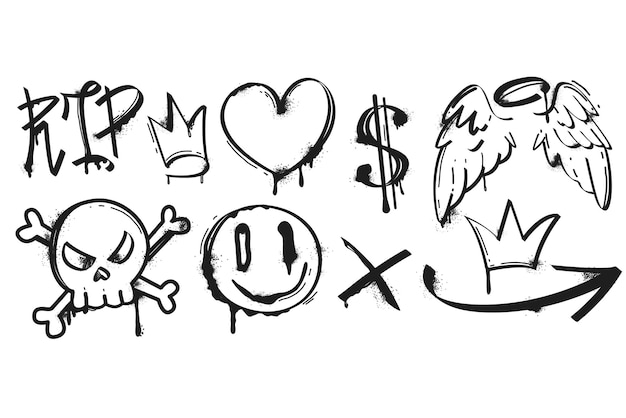
Graffiti, as part of street art culture, didn’t emerge with the hip-hop scene; it goes way back before urban civilization. People were drawing on cave walls long before the first settlements were established. Fast forward from ancient times, and we see the roots of graffiti taking shape well before the hip-hop era, especially in the early 20th century. As urban living grew, wall art began to form a notable sub-culture in cities, moving beyond simple scribbles or obscenities to meaningful messages that resonated with others.
One example is the phrase “Kilroy was here,” which symbolized the presence of US troops around the world after World War II. In New York, graffiti honored African American jazz musician Charles Parker with “Bird Lives,” well before hip-hop’s rise. The rock ‘n’ roll craze during the 1960s sparked a mass frenzy, giving birth to various sub-genres and movements. In London, graffiti paying tribute to musicians, like “Clapton is God,” gained attention. The punk era in the following decade showcased more wall art through anti-establishment slogans and widespread use of aerosol paints, paving the way for hip-hop to elevate graffiti into a recognized art form.
Graffiti culture expanded significantly with the subways becoming a canvas for artists, using spaces like abandoned areas, bridges, and industrial buildings. As rap music grew in popularity, so did graffiti, evolving in size, color, and message. This cultural rise was captured in the 1983 movie “Style Wars,” highlighting the clash between graffiti enthusiasts and those who viewed it as vandalism.
Eventually, graffiti transcended the hip-hop scene, linking with wider pop culture influences. Cartoons such as The Simpsons began appearing in graffiti, and renowned artists like Banksy rose to international fame. The influence of street art began affecting various facets of everyday life, with its visual style becoming prominent in fashion and mass culture. Many embraced graffiti-inspired designs without knowing its origins.
Commercially, street art moved into shopfronts, as owners preferred artistic murals over frequent cleaning. Clothing lines adopted graffiti imagery to make outfits more vibrant and appealing, appealing not just to kids but also to Hollywood stars and pop singers. This style appeared on clothing, accessories, and even sunglasses.
Graffiti found its way into car art as well, with custom designs remaining a costly preference compared to standard paint jobs. What began as a form of self-expression has evolved into mainstream culture, retaining its presence in urban environments and everyday life. Fashion trends may shift, but graffiti’s influence remains strong.
Do you appreciate street art, and have you ever been involved in it?